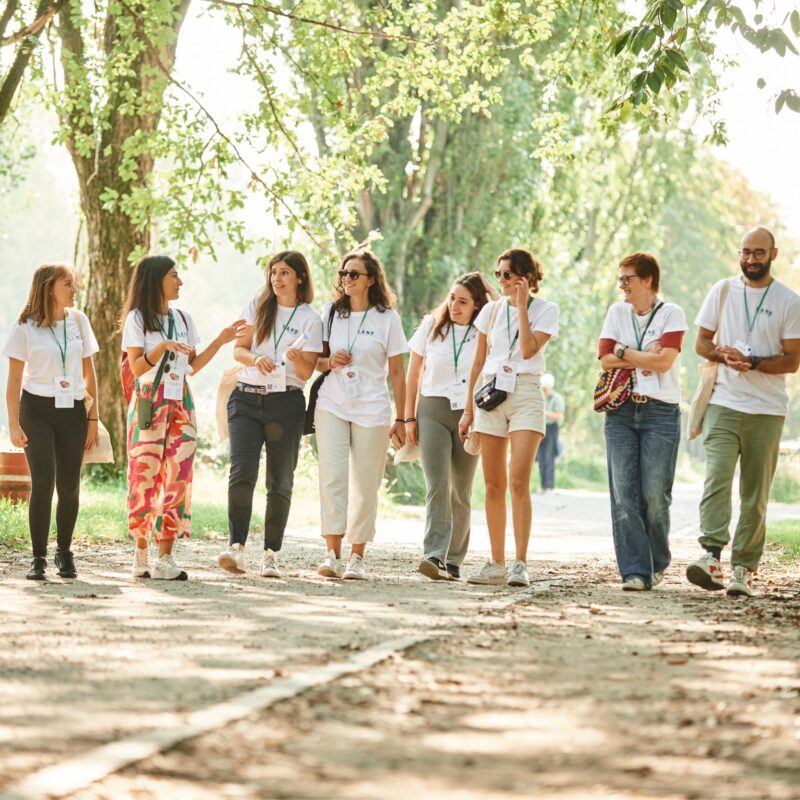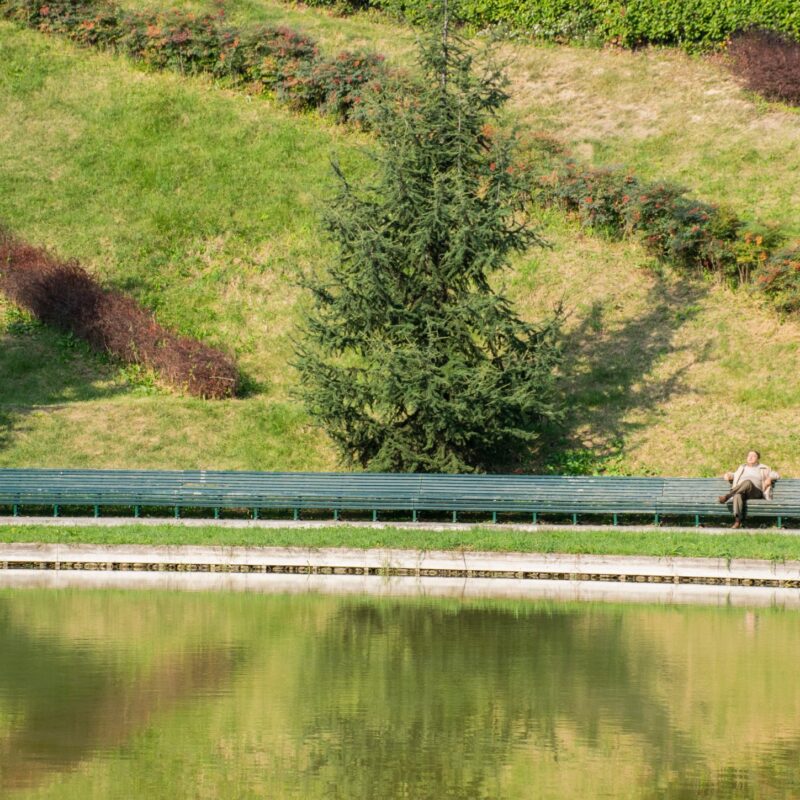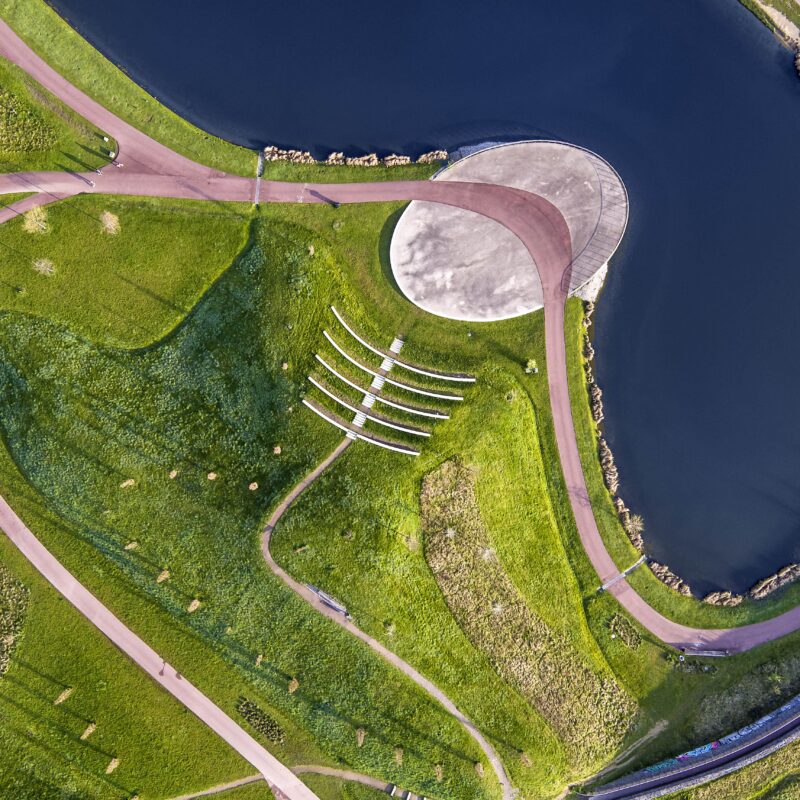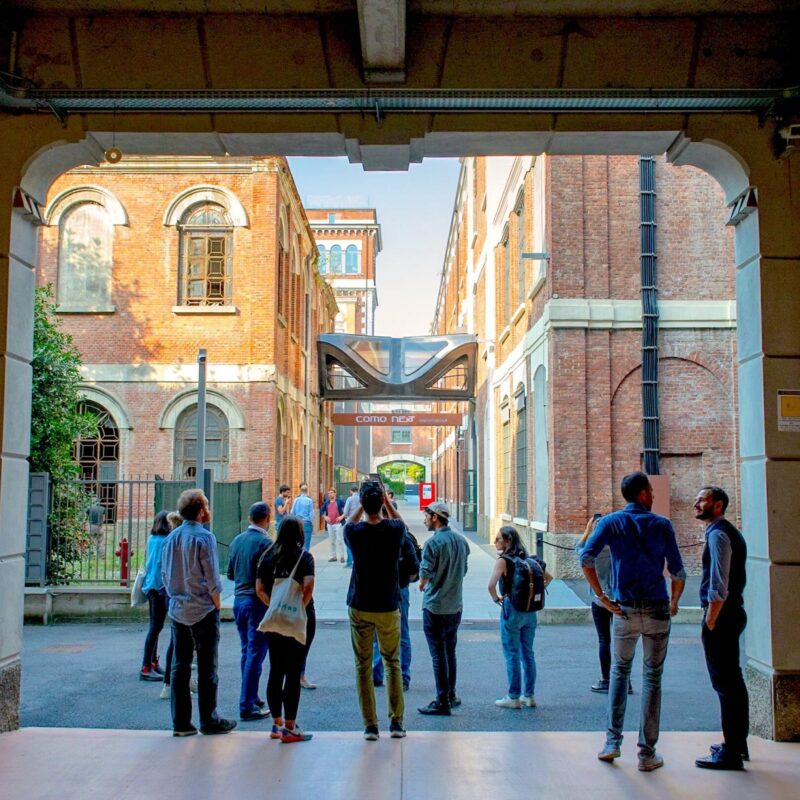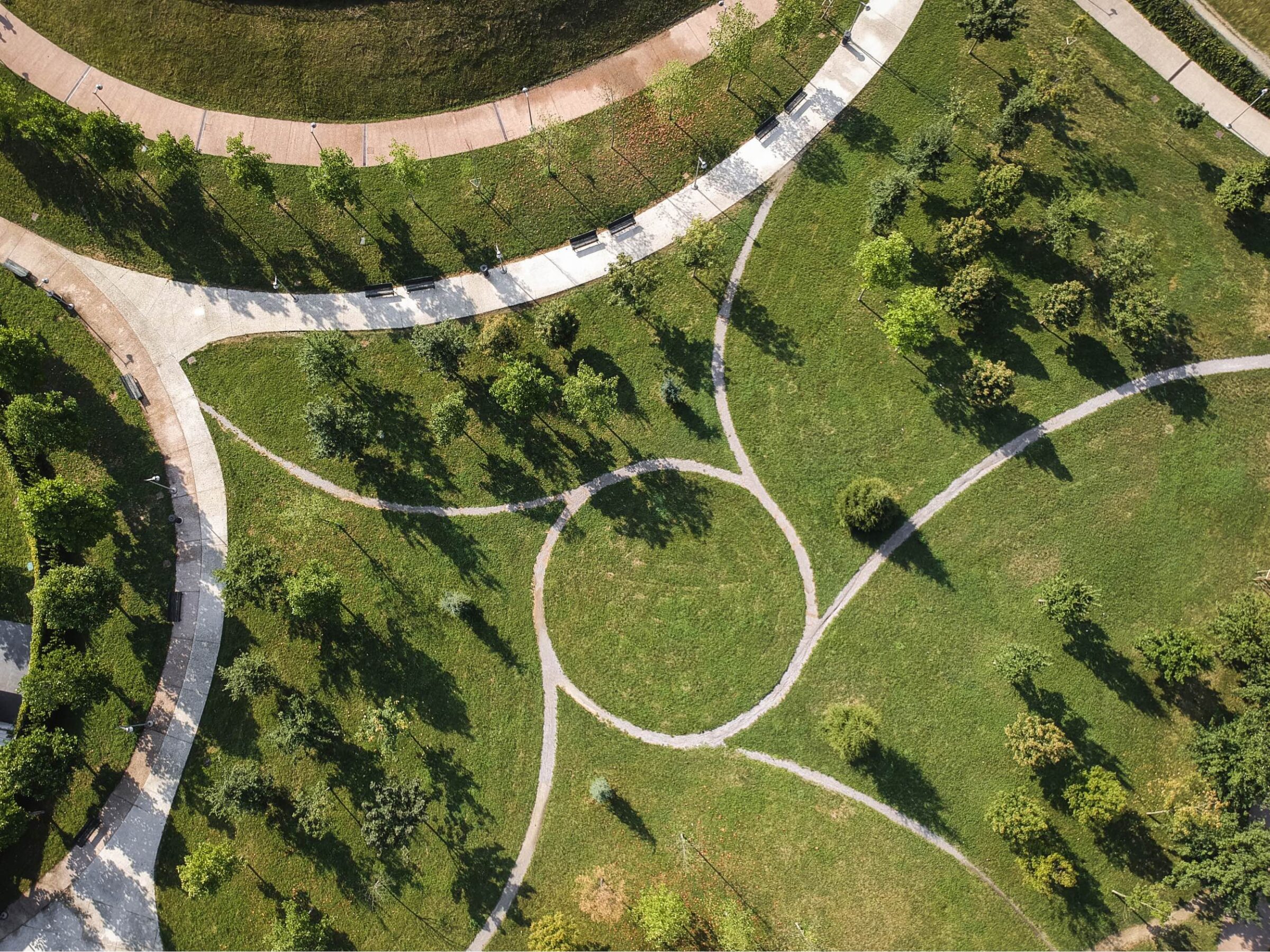
Portello Park wins the 2nd Prize at European Garden Award 2023
The Portello Park in Milan, designed by Charles Jencks, Andreas Kipar and LAND Italia, has been awarded the prestigious European Garden Award instituted by the European Garden Heritage Network EGHN in the category "Design or concept of a contemporary park or garden".
Arriving in Milan by motorway from the north, one can see two hills rising, one to the right and the other to the left of the main avenue leading into the city; both are artificial but were built about sixty years apart: the one on the right, Monte Stella, is approximately 50 metres high and was created using the rubble caused by bombing during the Second World War; the second, called Helix (i.e. helix, spiral), is just over 20 metres high and was erected in the early 2000s, using the excavated and demolition materials of the old Alfa Romeo factory in operation from 1906 to 1986 in the Portello district of the same name. The industrial settlement was built on a vast esplanade bordering the areas that had hosted the pavilions of the 1906 Expo, in an area of open countryside to the northwest of the city of Milan. The urban park, which covers an area of approximately 70,000 m2, is the result of a collaboration between Charles Jencks, the great American landscape architect and leading theorist of modernism and postmodernism in landscape architecture who died in 2009, and the LAND studio. At the top of Helix, in a truncated cone shape, is the fountain sculpture representing the double helix of DNA, also by Charles Jencks.
Portello Park is different from other Milanese parks because of its innate landscape vocation and the careful design thinking behind it. Conceived to be part of Gino Valle’s masterplan for the Portello-Fiera area, the park is recognizable from afar and thanks to its hills. The redevelopment process took place in dialogue with and in the sign of Charles Jencks. His project is a legacy to the inhabitants of Milan: a park in which to feel free to experience the rhythm of time. Because as Jencks himself wrote in 2009: ‘Landscapes and gardens always bear the imprint of time on their surfaces, in their growth and decay’.
The project structures the park from a series of circular spatial lines that form the construction lines of the three “green sculptures” positioned at the most strategic points for observing the city and the landscape around them: Mound1, Mound2, Mound3. Together with the small garden called Time Garden, these represent the different scans of time: Prehistory, History, Present and individual time. In the centre are two large ponds of water which welcome the visitor and provide a beautiful play of reflections, different for each season. A gesture that Andreas Kipar explains as follows: “An interweaving of circles and lines that echo the course of time both circular and linear, repetitive like the heartbeat and sequential like evolution.”
The park, located between two major thoroughfares, was inaugurated in December 2012 and, in a broader perspective of its relationship with the city, is part of a green system of pedestrian and bicycle paths, the so-called Green Rays, which, passing beyond the ring roads, connect the centre of Milan to the hinterland and offer a way to reconnect with nature. More than just a park, the Alfa Romeo Industry Park – Portello represents a concept with many levels of interpretation, a place where greenery, culture, play, sculpture, music and science come together and merge to tell an essential part of Milan’s history.
The European Garden Award is presented by the European Garden Heritage Network EGHN with its partners in 15 European countries (France, UK, Germany, Belgium, Netherlands, Italy, Sweden, Denmark, Ireland, Austria, Poland, Portugal, Russia, Spain and Switzerland) and the Schloss Dyck Foundation since 2010 with the support of Lorenz von Ehren Nurseries since 2012 and Garpa Garden & Park Furniture since 2022. Until 2022, around 120 specimens from 18 countries have been awarded. The Portello Park in Milan was mentioned – together with Petite Saussaie (France) and Westpark Augsburg (Germany) – in the ‘Design or concept of a contemporary park or garden’ category.
Park areas:
Prehistory
The Prehistory Hill, located next to one of the main high-traffic roads bordering the park, is the park’s first landmark for the city. Seen from the outside, it looks like an imposing green barrier that offers protection from noise and overlooks a spectacular stretch of water. This hill symbolises the universe’s primordial structure and the galaxies’ spirals and recalls the theme of speed in memory of past activities. Sunrise and sunset are framed by open space at the top of the hill and imposing stone elements. Benches, gravel, shrubs and a progression of flagstones mark eight crucial transformations over time.
History
Proceeding from the prehistoric hill, one arrives at the historical period section in the Time Garden. A semi-circle divides the park’s heart from the Time Walk and the children’s play area. This historical section tells of ancient Roman civilisation, early Christianity, the medieval period and the Renaissance, culminating in the industrial era that characterised northern Italy, particularly Milan, as witnessed by the activities of Alfa Romeo.
Along the route are signs dedicated to the industrial history of the place. Seats, information panels, lighting and flags create a continuous rhythm among the trees. The lines of choisya shrubs represent the shape of speed.
Present
The majestic hillside facing the city centre is traversed by a path that winds along two earthen helixes, culminating at the highest point (about 22 metres), where a DNA-shaped sculpture emerges, a tribute to the life and the sinuous lines of the park. The combination of metallic and natural elements emphasises, through contrast, the pleasure of enjoying a park integrated into the urban environment. From the highest peak of the hill, the view extends towards the city in one direction and over the entire park in the other, embracing the passage of time and the stages of human growth, which represent the common thread of the project: the hill of prehistory, of history, leaving open the theme of the future, which remains to be explored and defined.
Time Garden
The Time Garden is a particularly intimate and protected corner of the park. Inside the Time Garden, black and white slabs indicate the earth’s rotation, which occurs every 24 hours in its night and day cycle, as a fundamental rhythm. At the same time, it depicts the four seasons, represented by metal septa along a red wall; the 28 days of the lunar cycle, marked by circles along the Time Walk; the 12 months of the year, etched into the metal-like cut-out words; the 365 days of the year; and the waves of the heartbeat marked on the ground with alternating black and white stones. Like a Zen garden, the Time Garden narrates the individual’s journey through time employing different signs: pebbles, steps, plants with amazing scents and colours, enigmatic designs and floor inlays.
Moon Garden
With the ceremony on 23 November 2022, the last lot between Viale Serra to the southeast, Viale De Gasperi to the southwest and the existing park to the north was handed over to the citizens. The design inspiration for this part came from the astral bodies of the Sun and Moon and their interactions with the Earth. Hence the name for the new part of the park, Moon Garden. The shape was inspired by Athanasius Kircher’s ‘Phases of the Moon’ diagram, which represents the lunar cycle as a double spiral, for both hemispheres of the Earth, and where these shapes depict the duration of the moon’s visibility in the sky, with its rising and setting. The uphill spiral path features shaded resting places with benches. Fifty trees, including maples, liriodendrons, linden trees, mulberry trees and hollyhocks, alternate with 1,500 square metres of colourful flowerbeds with herbaceous and shrubby plants and groups of rhododendrons complete the ensemble.
